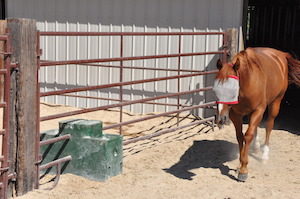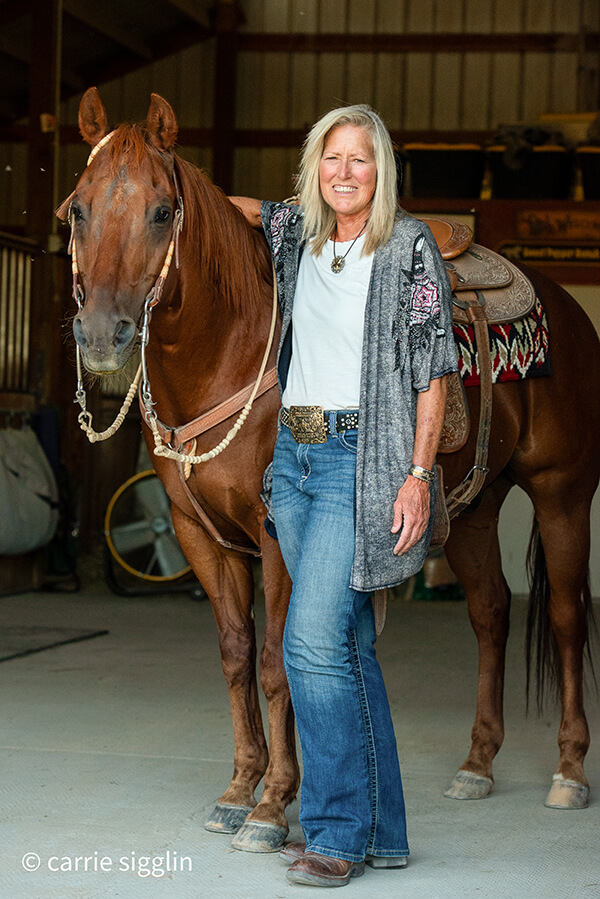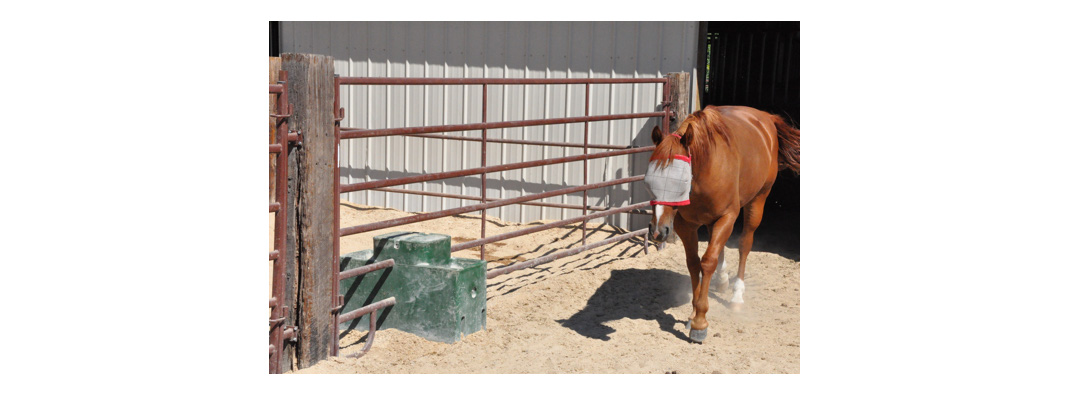Give Your Horse a Clean Source of Water and Make Chores More Efficient
by Alayne Blickle
Fall is your last chance to set up a water supply that won’t freeze or get icy cold before winter slips in the door and wreaks havoc. A horse drinks 8 to 12 gallons of water per day. Research shows horses prefer water temperatures of about 45-65 degrees and tend to drink less when water is cold. Keep in mind that research also tells us that a horse cannot get enough moisture by eating snow alone and decreased water consumption can lead to colic.
Automatic watering systems conserve water because they only use as much water as your horse can drink. Look for systems with moderately sized water pans—a large one will get dirty quickly and full of algae, requiring you to clean and dump it frequently. Another advantage to an automatic waterer is that since water is circulating and not stagnant, it won’t provide habitat for mosquitoes. At Sweet Pepper Ranch we put in Richie brand automatic waterers and I love them. They are chore-efficient and ensure fresh water is always available. This style of waterer doesn’t require energy to run and since they only hold five to ten gallons at a time. They are quick and easy to clean without wasting large volumes of water such as when dumping a stock tank. In addition, they are insulated to help keep water cooler during the summer and to prevent freezing in the winter.

Here is how to install an automatic waterer:
1. Choose a location. I prefer having the waterer in a paddock where you can clean them regularly. Having an automatic waterer in a stall is problematic as far as repair or cleaning.
2. Figure out where the nearest water line is. Obviously, you want it to be as close as possible to minimize the distance you will have to bury the line to your waterer.
3. Determine how deep your pipes will need to be laid. This is determined by how deep the ground freezes in your area in the winter. You may be able to check local zoning codes with the county department that issues building permits, or ask at a local building supply company. The minimum depth should be 24 inches, but it may need to be as deep as 48 inches. Frozen pipes can be a major problem.
4. Use a trencher to dig the ditch where you will lay your pipe. Renting a trencher may seem like an unnecessary expense but believe me, if you have to dig a trench by hand you’ll have trouble getting it as deep and as long as you need it. Plus, a trencher creates an even ditch that’s only 4-6 inches wide.
5. Decide if you need to run power out to the waterers. If so, it is best if you do it at the same time so you don’t have to dig a new ditch to bury the power line. Zone codes will tell you how much separation you need between water and power lines.
6. Follow the directions for the type of waterer you have purchased to anchor it into the ground. Some call for a cement pad the system bolts into. Others may only require you to bury a portion in the ground. Be sure to install it according to specifications.
7. Connect all water lines together. Turn the water on to pressurize the system and check for leaks before covering up all the pipes.
8. Cover water lines and you’re done!
It may sound like a lot of trouble, but when you are sitting inside in the middle of January the labor will be well worth it.
Get set for winter with Horses for Clean Water at the following FREE events:
REDMOND, WA
Thursdays, November 6, 13, 6:30 pm to 9 pm
WORKSHOPS: Land and Water Stewardship for Horse & Small Farm Owners
TOPICS: Manure Management: Got Livestock? Got Manure! November 6 with a Horses for Clean Water presenter
Mud Management: Record Rainfall / Record Mud. November 13 with Alayne Blickle as a presenter
Register and receive directions for all KCD events at 425-282-1949 or [email protected].
MONROE, WA
Wednesday, November 15, 6:30- 9 pm
WORKSHOP: Dealing with Drainage for Horse & Small Farm Owners
To register: managemud.eventbrite.com
Originally Published October 2014 Issue

Alayne Blickle began in the 1990’s as a pioneer in water conservation and natural resources conservation by creating the entrepreneurial consulting business, Horses for Clean Water, an award-winning internationally acclaimed education program that looks for horse-healthy, nature-based solutions to land management challenges. She continues this work today partnering with agencies, organizations, and horse owners throughout North America and worldwide. She is a regularly contributing writer and photojournalist to several equine publications.
Alayne lives with her horse trainer husband, Matt Livengood, in southwestern Idaho where they raise and train AQHA horses and mustangs on their eco-friendly horse ranch. Contact her through the Horses for Clean Water website or through their ranch website Sweet Pepper Ranch.
For more information contact Alayne at [email protected] or 206-909-0225.






